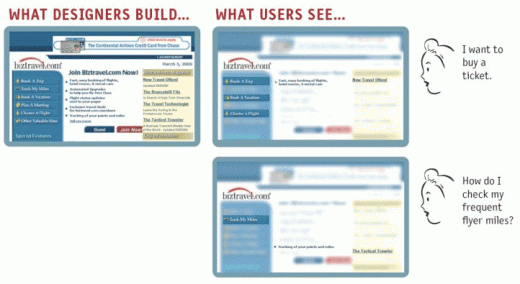WEB160 » How Pages are NOT Read
Think to yourself of how you actually use or read the website you cruise. Do you actually “read” everything on the page or do you stumble around looking for that one or two words that mean something to you?
Scanning Pages
When we’re creating websites we have a tendency to act as though users are going to look at every page and take the time to figure out how our site is organized:
- What users actually do is glance and scan our pages for the what they hope is the right link to click or the text read
- One of the very well documented facts about the web is that people spend very little time reading most web pages
Instead our users scan our web pages looking for words or phrases that catch our eye:
Why do we scan?
- We are usually in a hurry – much of our use of the web is motivated by the desire to save time
- We know that we don’t need to read everything – on most pages we’re really only interested in a fraction of what is on the page
- We’re good at it – we’ve been scanning newspapers, magazines and books all of our lives and the web is no different to us
We then tend to assume that users will scan our pages, consider all of the available options and choose the best one. But, in reality, most of the time we don’t chose the best option—we chose the first reasonable option, called “Satisficing.” As soon as we find a link that seems like it might lead to what we are looking for, we will click it and hope for the best.
See Also:
This portion of the Premium Design Works website is written by Mike Sinkula for the Web Design & Development students at Seattle Central College and the Human Centered Design & Engineering students at the University of Washington.














Social